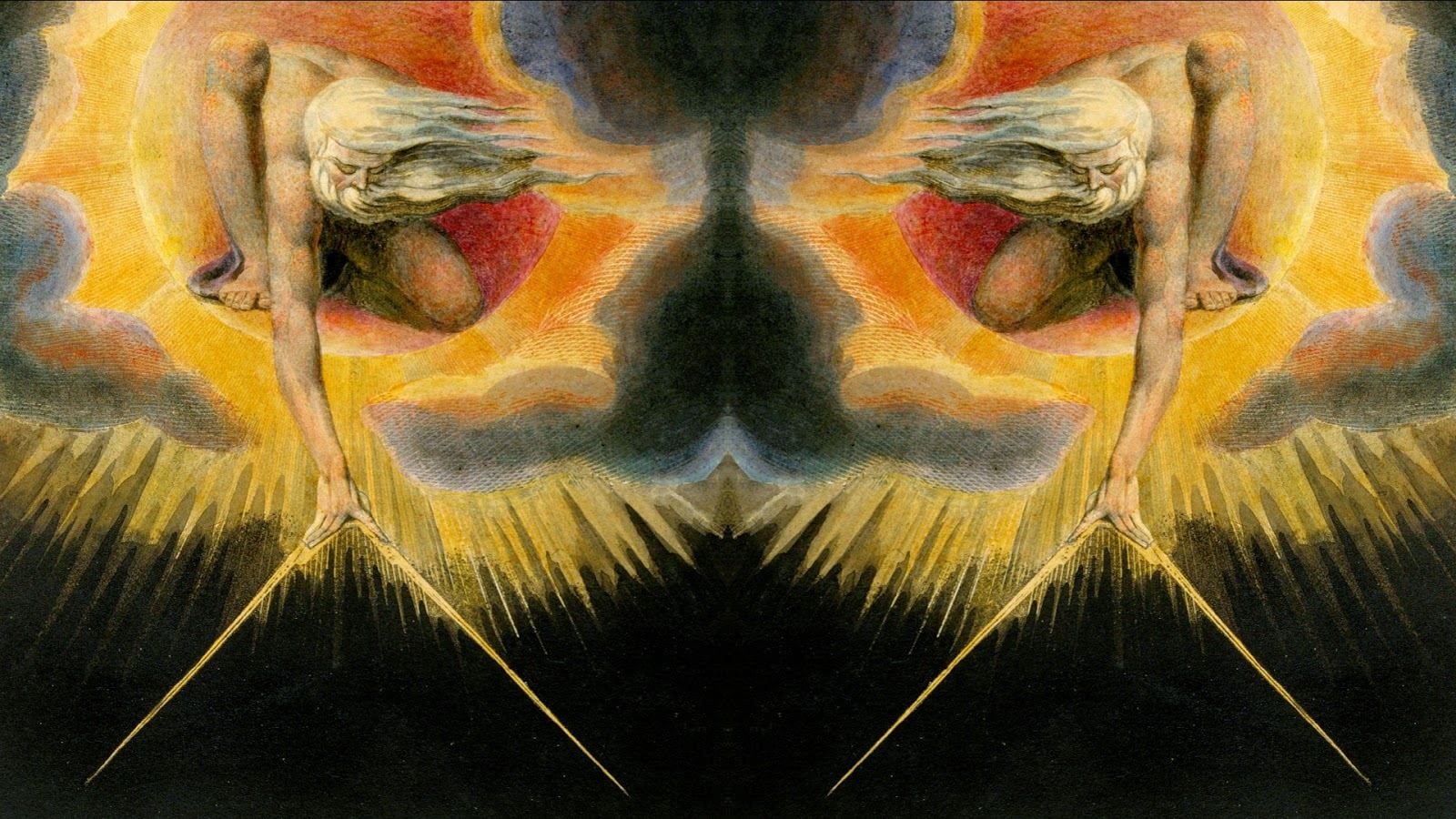
This mirrored image of “The Ancient of Days” depicts the separation of light from darkness, and serves as the frontispiece to William Blake’s Europe A Prophecy, written in 1794.
Maddie Williams is a senior honors international studies and political science major at the University of Arkansas. Interested in the origins of religion and theological underpinnings of conflict, Maddie has spent much of her undergraduate career in a diverse range of religious environments, including spending the spring semester in Buddhist Mongolia evaluating national security through the lens of religion. In this blog post on Genesis for Dean Coon’s Retro Readings course “Bible,” Maddie examines the contested authorship of the Book of Genesis, as well as an analysis of different interpretations of God’s relationship with humanity.
While the New Testament speaks of the Law as Moses, or the books or law of Moses, the authorship of the book of Genesis is technically anonymous; however, the New Testament attribution of the Torah as a whole to Moses would imply the same Mosaic authorship for Genesis as it does Exodus through Deuteronomy, upon the basis of Torahic unity. Some scholars have argued for four-part authorship, because of the names used and writing styles utilized. Each of these authors is denoted by J, E, P or D, according to the names they use in reference to God. They are brought together by R, the redactor, to create stories that overlap to the extent that simple division of the Torah would inhibit the understanding of how the text interacts as a whole. The book of Genesis is a primary source for Jewish theology, presenting narrative as the vehicle through which it conveys its worldview. Traditionally, Genesis is dated to Mount Sinai, in accordance with the classically accepted view of Mosaic authorship, but there are many scholars who date it as late as the 6th or 5th century BCE.
The most immediate recipients of the Book of Genesis would likely have been the Exodus generation, but the intended audience could extend to all future generations of the elect seed of Abraham born under the Mosaic covenant. The context for understanding Genesis, however, is not the occasion for its writing, but rather the historical circumstances which are revealed in the progress of the narrative as it moves from the Creation to the death of Joseph. Inasmuch as physical and textual history begin with the creation narrative, the historical context for ensuing affairs is chronicled in Genesis to the degree needed to comprehend the narrative movement and theological development of God’s relationship with humanity.
Genesis 1:26 uses a plural form of Hebrew, “. . .Let us create man in our own image. . .” which generally denotes a trinitarian aspect to the Creator God but has also been used to interpret this passage and the following Scriptures in a polytheistic manner. This strain of polytheism utilizes themes from a Henotheistic perspective, acknowledging the supremacy of the Creator God, but not denying the existence of lesser gods, which is seen in some interpretations of the “divine counsel.” Similarly, a Monolatric perspective believes in the existence of multiple gods, but consistently worships one deity.
Genesis is a book of beginnings: the beginning of the world, the beginnings of humanity, the agrarian economy, and the beginning of covenantal relationships. It reflects the social organization and economic realities of the pastoral agrarian economy of the time.The ordering and logic of the opening of Genesis directly reflects the desired order found in a high-functioning agrarian society. It also shows the priestly hand that was evident in this first chapter of beginnings, reflecting order, structure and a movement away from that which is in impure.
There are some discrepancies between the creation narrative in Genesis 1 and Genesis 2. The particular issue that Biblical scholars have with Genesis 2that the order of the creation of man, animals and trees seems to be contrary to the order stated in Genesis 1. Genesis 1 paints a picture of man as a divine replica in that he was created in the direct image of the divine creator (whether the divine picture of man is attributed to simple divinity or a singular divine being is also in question). However, Genesis 2 portrays humankind as the product of lucky dirt, having divine life breathed into it. As a result, humanity becomes not an amalgam of perishable body and immortal soul, but a psychophysical unity between Creator and created.
For Further Reading:
Rachel Havrelock, “Genesis,” in ed. Michael Lieb, Emma Mason, and Jonathan Roberts, The Oxford Handbook of the Reception History of the Bible (Oxford, 2011), 11-24.
